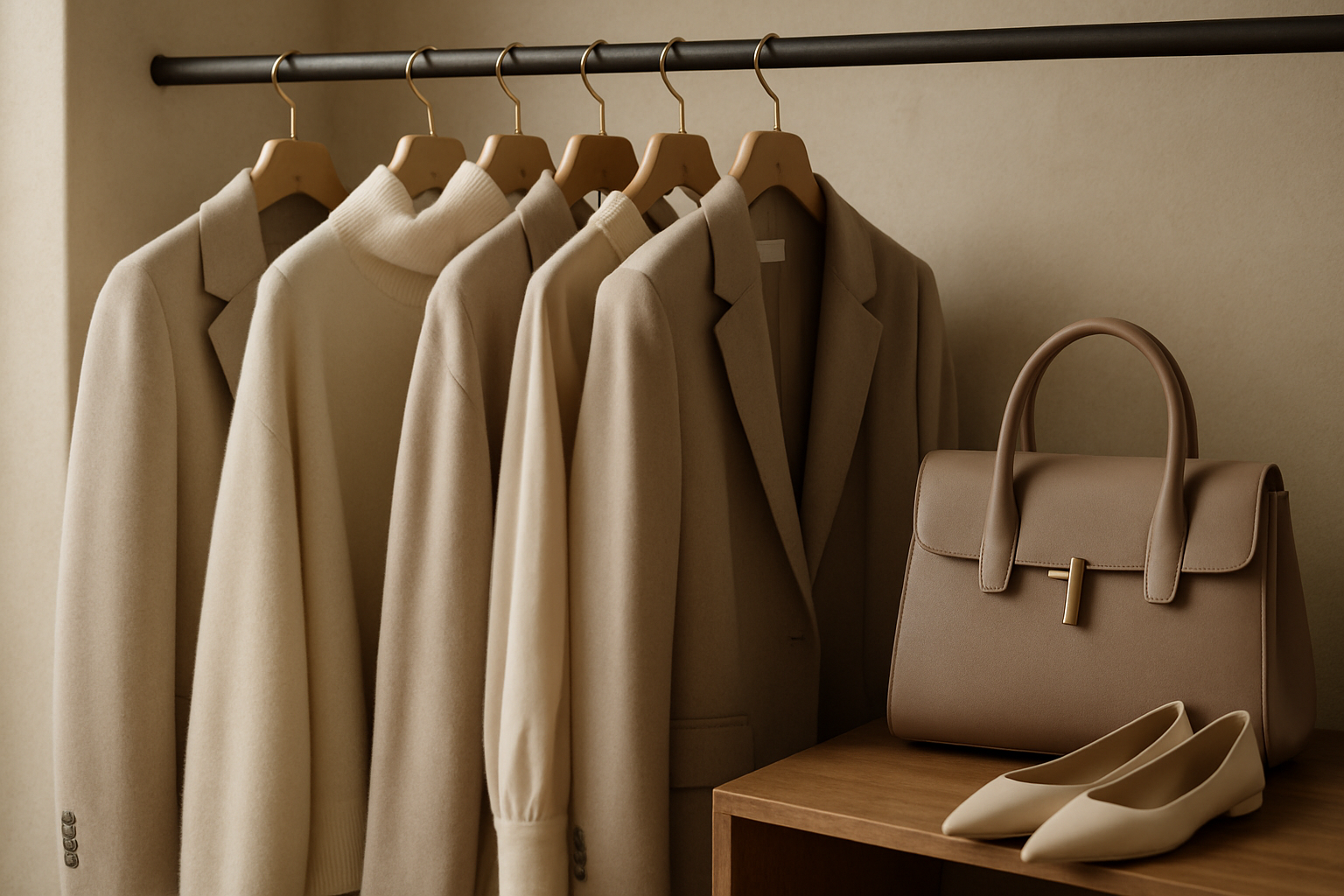The Allure of Textured Monochrome: A Fresh Take on Tonal Dressing
In a world awash with vibrant hues and eclectic patterns, a new sartorial revolution is quietly unfolding. Textured monochrome, a sophisticated evolution of tonal dressing, is captivating fashion enthusiasts and redefining elegance. This nuanced approach to style marries the simplicity of a single-color palette with the depth and intrigue of varied textures, creating looks that are both visually arresting and effortlessly chic.

The Origins of Tonal Dressing
Tonal dressing has its roots in the minimalist movement of the 1990s, where designers like Jil Sander and Calvin Klein championed clean lines and muted palettes. However, the concept of monochromatic dressing can be traced back even further to the likes of Coco Chanel, who famously said, The best color in the whole world is the one that looks good on you.
As fashion evolved, so did the approach to single-color outfits. What was once seen as a safe, perhaps even boring choice, has transformed into a sophisticated statement of style confidence. The key shift came with the introduction of texture as a central element, adding depth and interest to what could otherwise be a flat look.
The Psychology of Color and Texture
Wearing a single color from head to toe has a powerful psychological impact. It creates a sense of cohesion and can make the wearer appear taller and more put-together. When this monochromatic approach is combined with varied textures, it adds a layer of complexity that engages the viewer on both a visual and tactile level.
Different textures can evoke different emotions and associations. Smooth, glossy surfaces might convey sleekness and modernity, while rougher, more organic textures can suggest warmth and approachability. By playing with these textural contrasts within a single color palette, wearers can craft outfits that not only look striking but also communicate subtle messages about their personality and mood.
Mastering the Art of Textural Contrast
The key to successful textured monochrome lies in the careful selection and combination of different fabric types. Think of your outfit as a canvas, where each piece contributes to a harmonious whole through its unique surface quality. Here’s how to approach it:
-
Start with a base: Choose a foundational piece in a solid, matte finish.
-
Add shine: Incorporate elements with a slight sheen or glossy texture to create highlights.
-
Introduce roughness: Bring in pieces with more tactile surfaces like knits, tweeds, or boucle fabrics.
-
Play with patterns: Use subtle tone-on-tone patterns to add visual interest without breaking the monochrome theme.
-
Experiment with fabric weight: Mix lightweight and heavier materials to create depth and dimension.
The Versatility of Textured Monochrome
One of the most appealing aspects of textured monochrome is its versatility. This styling approach works across all seasons and can be adapted to various occasions, from casual daywear to elegant evening attire. In winter, layering different textures creates warmth and visual interest, while in summer, lighter fabrics in varying weaves can keep the look fresh and breezy.
For workwear, a textured monochrome outfit in navy or charcoal can project authority and sophistication. For evening events, playing with different shades of black or deep jewel tones can result in a look that’s both dramatic and refined. Even in casual settings, a well-executed textured monochrome ensemble elevates everyday style to new heights.
The Future of Textured Monochrome
As we move forward, the trend of textured monochrome is likely to evolve in exciting ways. Designers are experimenting with innovative fabrics and finishes, pushing the boundaries of what’s possible within a single color palette. We’re seeing the emergence of smart textiles that change texture or appearance based on environmental factors, opening up new possibilities for dynamic monochromatic dressing.
Additionally, as sustainability becomes increasingly important in fashion, the concept of textured monochrome aligns well with the idea of creating versatile, long-lasting wardrobes. By investing in quality pieces in complementary textures and shades, consumers can build capsule collections that offer countless styling options while minimizing waste.
Elevate Your Textured Monochrome Game
-
Experiment with unexpected color choices beyond neutrals, like rich burgundy or deep teal
-
Incorporate accessories with contrasting textures, such as a smooth leather belt with a chunky knit sweater
-
Use makeup to enhance the monochromatic look, matching lip color to your outfit for a cohesive appearance
-
Don’t shy away from mixing high-end pieces with more affordable items - texture can elevate even simple basics
-
Consider the silhouette as part of your textural play, combining flowing fabrics with more structured pieces
In the ever-evolving world of fashion, textured monochrome stands out as a trend with staying power. It offers a sophisticated alternative to loud prints and clashing colors, proving that sometimes, less really is more. By mastering the art of combining different textures within a single color palette, fashion enthusiasts can create looks that are both timeless and thoroughly modern. As we continue to redefine what it means to dress well, textured monochrome emerges as a powerful tool in the stylish individual’s arsenal, offering endless possibilities for self-expression and sartorial excellence.





